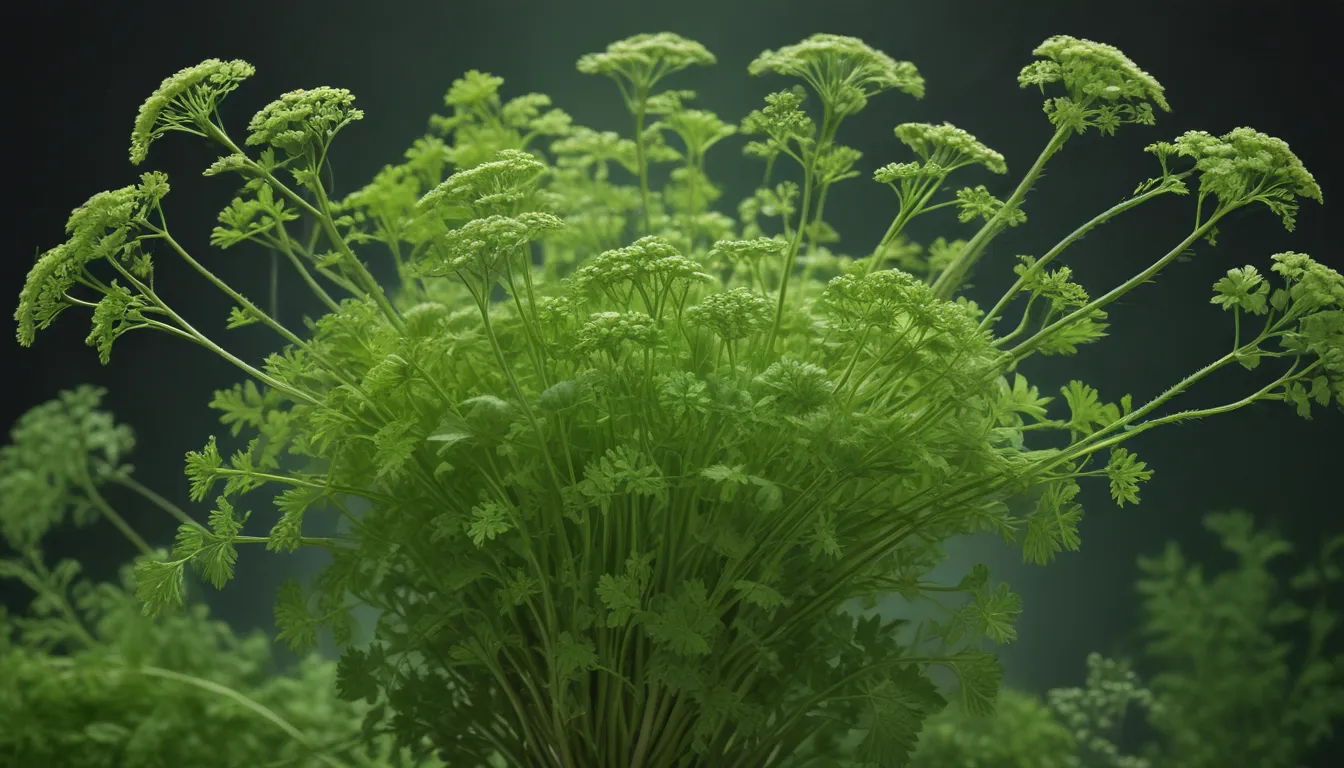The pictures in our articles might not always show exactly what the text is talking about. We use these images to make the article more interesting and eye-catching. They are there to add to the text, but not to replace it or show every detail.
Are you intrigued by the world of herbs and spices, always eager to discover new flavors and aromas to enhance your culinary creations? If so, then chervil, also known as "French parsley" or "garden chervil," is a herb that deserves your attention. In this comprehensive guide, we will delve into the enchanting realm of chervil and unveil 19 interesting facts about this delicate and aromatic herb. From its origins and health benefits to its culinary uses and growing tips, you'll uncover everything you need to know about chervil. So, sit back, relax, and embark on this delightful journey with us as we explore the wonders of chervil!
Key Takeaways:
- Chervil is a delicate herb with a mild, sweet taste, commonly used in French cuisine and known for its fern-like leaves. - Chervil, also known as “gourmet’s parsley,” has a rich history associated with love and fertility. It is rich in vitamins and minerals, making it a popular choice for garnishing dishes and enhancing flavors. - Chervil can be easily grown in pots or in the garden, and its leaves are best added to dishes just before serving to preserve their delicate flavor.
Unveiling the Enchanting Flavor of Chervil
One of the most captivating aspects of chervil is its subtle and delicate flavor profile. Unlike other herbs, chervil offers a mild and sweet taste that is reminiscent of anise or licorice. Its delicate leaves, with their fern-like appearance, are commonly used to add a touch of sophistication to dishes such as soups, sauces, and salads.
Embracing the French Culinary Tradition with Chervil
In the realm of French cuisine, chervil holds a special place as a beloved herb. Known as "cerfeuil" in French, this herb is a staple ingredient in classic French dishes, including the renowned fines herbes blend. The elegant and light appearance of chervil leaves adds a refined touch to culinary creations, making it a favorite among chefs and home cooks alike.
Exploring the Botanical Roots of Chervil
Belonging to the parsley family, chervil is part of the Apiaceae family, which also includes herbs like parsley, dill, and cilantro. Originally native to Europe and parts of Asia, chervil has a rich botanical history that traces back to the Mediterranean region. Today, it is cultivated in various parts of the world, delighting taste buds with its unique flavor and aroma.
Unveiling the Delicate Beauty of Chervil Leaves
The fern-like and delicate leaves of chervil are a sight to behold in the culinary world. With feather-like leaflets that exude elegance and grace, chervil leaves are not only visually appealing but also offer a light and refreshing flavor to dishes.
Nurturing Chervil: Tips for Growing and Harvesting
While chervil is a delicate herb with a short shelf life, it is easy to grow and maintain. Whether you have a small balcony or a spacious garden, you can cultivate chervil in pots or directly in the soil. Its seeds can also be used as a spice, adding a warm and slightly bitter flavor to dishes. To ensure the best flavor, chervil leaves should be added to dishes just before serving, preserving their delicate taste and aroma.
The Medicinal Marvels of Chervil
In addition to its culinary appeal, chervil boasts a range of health benefits that have been cherished for centuries. Rich in vitamins A and C, as well as iron, calcium, and potassium, chervil offers a nutritional boost to dishes. Traditionally, chervil has been used to aid digestion, relieve coughs, and reduce inflammation, making it a versatile herb with holistic properties.
Embracing the Versatility of Chervil in Cooking
From garnishing dishes and infusing herb butter to being a key ingredient in traditional French soups, chervil offers a world of culinary possibilities. Its delicate flavor pairs well with seafood, poultry, and a variety of dishes, adding a touch of freshness and sophistication to every bite. Whether you're a seasoned chef or a budding home cook, chervil invites you to explore new horizons in the kitchen and elevate your culinary creations to new heights.
Unlocking the Mysteries of Chervil: Frequently Asked Questions
-
What does chervil taste like?
Chervil has a delicate flavor that combines notes of parsley and anise, offering a slightly sweet and aromatic taste. -
How should I store chervil?
To maintain freshness, store chervil wrapped in a damp paper towel and placed in a plastic bag in the refrigerator. It is best used within a few days of purchase. -
Can I use chervil as a substitute for other herbs?
Chervil can be used as a substitute for parsley or tarragon in certain recipes, adding a unique flavor to dishes. -
Are there any health benefits to consuming chervil?
Yes, chervil is packed with vitamins and minerals that can aid in digestion, boost the immune system, and promote overall well-being. -
Where can I find chervil?
Chervil can be found in grocery stores or farmer's markets, or you can cultivate it in your own herb garden for a fresh supply.
Embark on a Culinary Adventure with Chervil
In conclusion, chervil is a versatile and underrated herb that adds a unique touch to dishes with its delicate flavor and aroma. Whether you use it as a garnish, incorporate it into sauces, or experiment with chervil-infused recipes, this herb promises to elevate your culinary creations to new heights. Not only does chervil enhance the flavor of dishes, but it also offers a range of health benefits, making it a valuable addition to any kitchen. So, the next time you encounter chervil in your local market or herb garden, seize the opportunity to explore its enchanting flavors and embark on a culinary adventure filled with creativity and inspiration.
Chervil's delicate flavor and versatility make it a must-have for any herb garden or kitchen. Explore more fascinating facts about herbs, from their culinary uses to their enigmatic properties. Discover the world of culinary delights and how herbs like chervil can elevate your dishes to new heights. Whether you're a seasoned chef or a curious home cook, there's always something new to learn about these aromatic wonders.
Your Journey of Discovery with Chervil
Our commitment to delivering trustworthy and engaging content is at the heart of what we do. Each fact on our site is contributed by real users like you, bringing a wealth of diverse insights and information. To ensure the highest standards of accuracy and reliability, our dedicated editors meticulously review each submission. This process guarantees that the facts we share are not only fascinating but also credible. Trust in our commitment to quality and authenticity as you explore and learn with us.
Enjoy your journey of discovery with chervil, and may your culinary adventures be filled with joy and inspiration!






